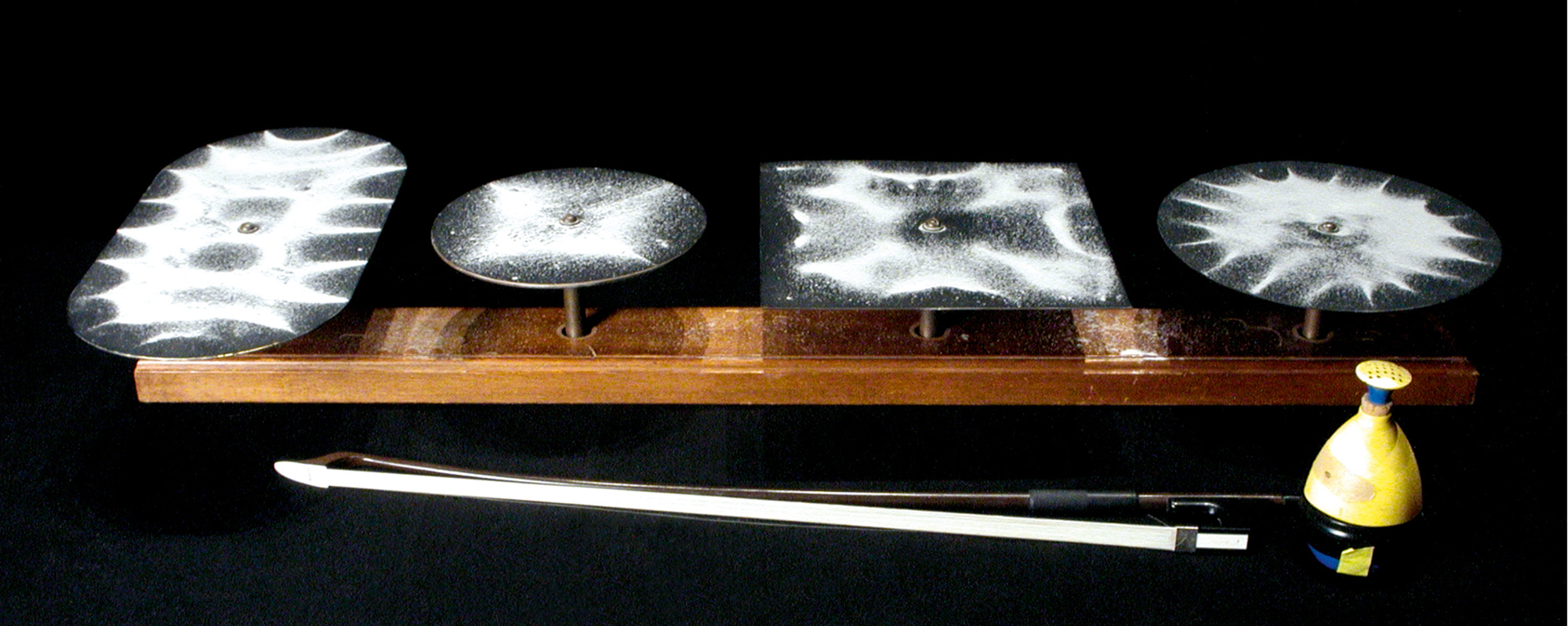Shapes with the Sound of Their Own Making
The many resonances of the Chladni plate
Aura Satz

In 1785, Ernst Florens Friedrich Chladni was experimenting with the vibration of different sonorous bodies, notably glass and metal. Inspired by the feather-shaped, powdered electric figures discovered only a few years earlier by Georg Lichtenberg, he sprinkled sand over a metal plate and drew a violin bow across the edges at various points. “In this way, the first pattern that I saw before my eyes, on the circular plate, looked like a star with 10 or 12 rays. … Imagine my astonishment in seeing this phenomenon, which had never yet been seen.”[1]
Chladni’s highly symmetrical sound-figures (klangfiguren) were the patterns of the sand depositing in the areas where the metal plate vibrated the least, the traces left by the minute vibrations of resonating matter. Introduced across Europe in live demonstrations, the figures perplexed and astonished many observers (including Napoleon), not only inaugurating the modern science of acoustics but also inspiring many thinkers to consider their aesthetic character and metaphysical implications. These patterns were neither the prior notation of sound as musical score nor the posterior reading of it. In what appeared to be a perfect and simultaneous fit of sound and image, they visualized sound in its making. The Chladni figures tantalizingly promise a universal language; their highly symmetrical abstractions instinctively suggest writing and yet resist intelligible reading. The abstract forms are an indexical trace, and yet they appear to point to a symbolic code that cannot be easily deciphered. In observing these sound scripts, one has an experience that suggests both an intuitively genuine synchronicity and simultaneity, and, at the same time, a language which remains perceptually obscure. It is as if the close interlocking of the sense of hearing and the sense of sight might reveal something of the true nature of their connection, a language on the threshold of formation, and yet in perceiving it one remains unable to apprehend the code or read it back.
In his writings from 1810, the German Romantic physicist Johann Wilhelm Ritter found in the Lichtenberg figures and the Chladni patterns proof that nature is full of hidden ciphers. Ritter opened up a new reading of the klangfiguren as language:
It would be nice if that which is externally clear here, would be precisely that which the sound-figure is to us innerly:—light figure, firewriting. Every tone thus has its letter immediately by itself; and the question is whether we do not in fact only hear writing,—read, when we hear,—see writing!—And is not every seeing with the inner eye hearing, and hearing a seeing of, and through, within? ... do we ever have a thought, or an idea, without its hieroglyph, its letter, its writing?[2]